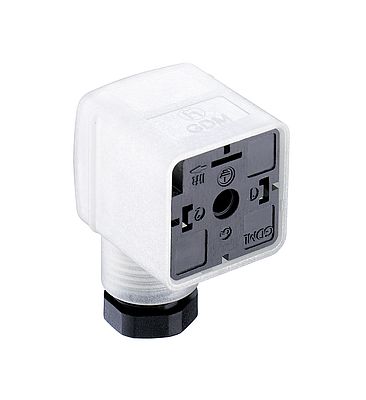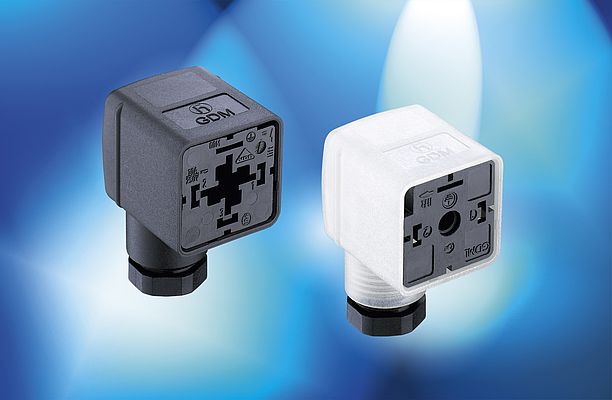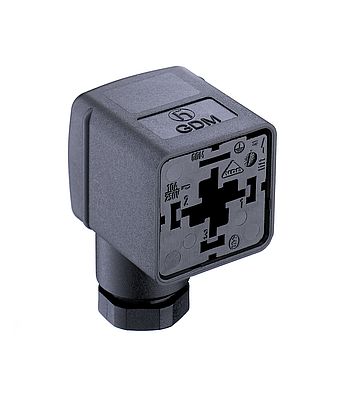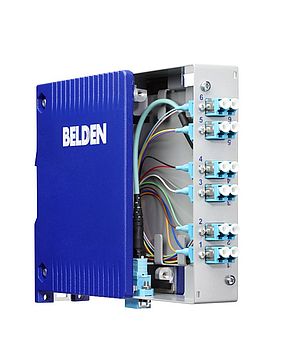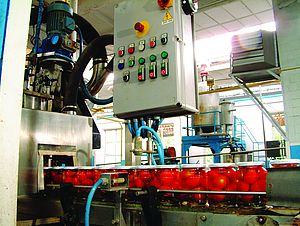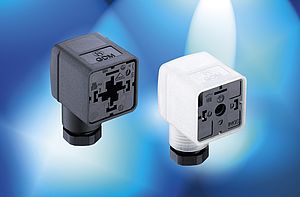Every day, thousands of producers face the same pressure. Product reliability is a huge issue. The worst possible situation for any manufacturer - regardless of the industry - is an unscheduled stop of production. The key consequences of such a production stop are not only a loss of time, as someone has to locate the error and make the necessary repairs, but also a considerable loss of money.
Downtime in an automotive assembly plant capable of producing one vehicle per minute for instance, could result in profit losses of up to euro 10.000 each minute. The reason for such a shut-down is often to be found in the connectors. Installed on the field level they are exposed to harsh conditions, ranging from aggressive chemicals to extreme shock and vibration, all of which can shorten their life-time. Once a connection is broken, the downstream electronics are no longer protected.
Apart from supplying power to components such as solenoid valves, pressure sensors and temperature sensors, valve connectors also form the interface to data networks and ensure effective protection of the downstream equipment from excess voltage or electromagnetic fields via circuit boards inside of the connector.
Various technologies
There are a number of technologies for assembling the cable to the circuit board within a valve connector. Soldering and press-fitting are the key methods available. Soldering is the most common technology on the market today. However, it has a number of disadvantages. Firstly, the process has to be carried out manually, which is time and labor intensive and a potential source for malfunctions in the production plant. When soldering, the worker might use too high temperatures, carry out the heating process for too long and thus damage the circuit board etc. Furthermore, solder splashes might cause short circuits between elements on the board. In order to meet new regulations soldering process need to be lead-free. Accordingly within the process of soldering temperatures are significantly increasing in comparison to the traditional method which may damage the circuit board. Further, the soldering connection may be cold soldered, so even if the connection looks fine, it may be brittle and break as a result of being subjected to vibration, thus causing a loose contact.
In contrast to soldering, the press-fit technology allows a more automated process in the assembly and therefore reduce the potential of human errors. However, vibration may loosen the pins over time, once again breaking the connection.
It is for this reason that Belden decided to redesign and extend its industrial connectivity portfolio of valve connectors, Type A, in the Hirschmann GDM series. This latest series of industrial valve connectors sets new standards in performance and flexibility.
A key feature is that these connectors do not have any of the disadvantages of either soldering or press-fitting predecessors. This is achieved by incorporating Belden's double press-fitting technology, which provides a back-up for every contact, so these connectors can handle intense shock and vibration better than ever before.
Due to using high-grade materials within these connectors they are resistant to numerous chemicals as well as UV light, and have been designed to withstand even the harshest environments, where they can provide a long service life and thus a reduce total cost of ownership.
They are available with new protective circuitries, a high protection class and can be used to power, and increase the functional safety of solenoid valves, pressure transducers, temperature sensors and flow monitors reliably. The valve connectors are installed simply by tightening the central screw provided.
The new connectors' protective circuitry prevents malfunctions due to surge voltages, plus function indicators that make it possible to keep an eye on their operating status. High levels of shock and vibration resistance, plus versions with a variety of protection ratings, all the way up to IP68, guarantee that these valve connections will maximize the uptime of your equipment - even under the most challenging environmental conditions.
Since these valve connectors fulfil all relevant international standards, they can be used globally. This applies not only to machinery and plant construction, but to numerous other applications that require precise valve control, for example braking systems in rail vehicles and trucks.


